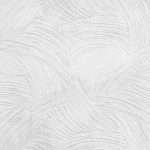Burm and berm are two terms that are often used interchangeably in the landscaping and construction industries. However, the two terms do have slightly different meanings and uses.
A burm is an artificial mound of earth that is built up on the edges of a flat piece of land or along a body of water. It is typically used to create a barrier or border between two areas. The mound is usually built with soil and can range in height and width depending on the purpose. It can be used to protect a space from flooding, to create a border between properties, or to provide a visual barrier.
A berm is also an artificial mound of earth, but it is typically used to provide a barrier of sound or sight. A berm is typically built up along a roadway or other areas where noise pollution is an issue. The berm will act as a sound barrier, reducing the amount of noise that passes through. It can also be used to provide a visual barrier between two areas.
The main difference between a burm and a berm is their purpose. A burm is used for border and flood protection, while a berm is used for sound and visual protection. Both of these mounds can provide great benefits to a landscape, and they are often used in combination to create the desired effect.
In summary, a burm is an artificial mound of earth used for border and flood protection, while a berm is an artificial mound of earth used for sound and visual protection. Both of these mounds can be used to create a barrier between two areas, and they are often used in combination to get the desired effect.Burm and berm are two terms that are often used interchangeably in the landscaping and construction industries. However, the two terms do have slightly different meanings and uses.
A burm is an artificial mound of earth that is built up on the edges of a flat piece of land or along a body of water. It is typically used to create a barrier or border between two areas. The mound is usually built with soil and can range in height and width depending on the purpose. It can be used to protect a space from flooding, to create a border between properties, or to provide a visual barrier.
A berm is also an artificial mound of earth, but it is typically used to provide a barrier of sound or sight. A berm is typically built up along a roadway or other areas where noise pollution is an issue. The berm will act as a sound barrier, reducing the amount of noise that passes through. It can also be used to provide a visual barrier between two areas.
The main difference between a burm and a berm is their purpose. A burm is used for border and flood protection, while a berm is used for sound and visual protection. Both of these mounds can provide great benefits to a landscape, and they are often used in combination to create the desired effect.
In summary, a burm is an artificial mound of earth used for border and flood protection, while a berm is an artificial mound of earth used for sound and visual protection. Both of these mounds can be used to create a barrier between two areas, and they are often used in combination to get the desired effect.Burm and berm are two terms that are often used interchangeably in the landscaping and construction industries. However, the two terms do have slightly different meanings and uses.
A burm is an artificial mound of earth that is built up on the edges of a flat piece of land or along a body of water. It is typically used to create a barrier or border between two areas. The mound is usually built with soil and can range in height and width depending on the purpose. It can be used to protect a space from flooding, to create a border between properties, or to provide a visual barrier.
A berm is also an artificial mound of earth, but it is typically used to provide a barrier of sound or sight. A berm is typically built up along a roadway or other areas where noise pollution is an issue. The berm will act as a sound barrier, reducing the amount of noise that passes through. It can also be used to provide a visual barrier between two areas.
The main difference between a burm and a berm is their purpose. A burm is used for border and flood protection, while a berm is used for sound and visual protection. Both of these mounds can provide great benefits to a landscape, and they are often used in combination to create the desired effect.
In summary, a burm is an artificial mound of earth used for border and flood protection, while a berm is an artificial mound of earth used for sound and visual protection. Both of these mounds can be used to create a barrier between two areas, and they are often used in combination to get the desired effect.Burm and berm are two terms that are often used interchangeably in the landscaping and construction industries. However, the two terms do have slightly different meanings and uses.
A burm is an artificial mound of earth that is built up on the edges of a flat piece of land or along a body of water. It is typically used to create a barrier or border between two areas. The mound is usually built with soil and can range in height and width depending on the purpose. It can be used to protect a space from flooding, to create a border between properties, or to provide a visual barrier.
A berm is also an artificial mound of earth, but it is typically used to provide a barrier of sound or sight. A berm is typically built up along a roadway or other areas where noise pollution is an issue. The berm will act as a sound barrier, reducing the amount of noise that passes through. It can also be used to provide a visual barrier between two areas.
The main difference between a burm and a berm is their purpose. A burm is used for border and flood protection, while a berm is used for sound and visual protection. Both of these mounds can provide great benefits to a landscape, and they are often used in combination to create the desired effect.
In summary, a burm is an artificial mound of earth used for border and flood protection, while a berm is an artificial mound of earth used for sound and visual protection. Both of these mounds can be used to create a barrier between two areas, and they are often used in combination to get the desired effect.


